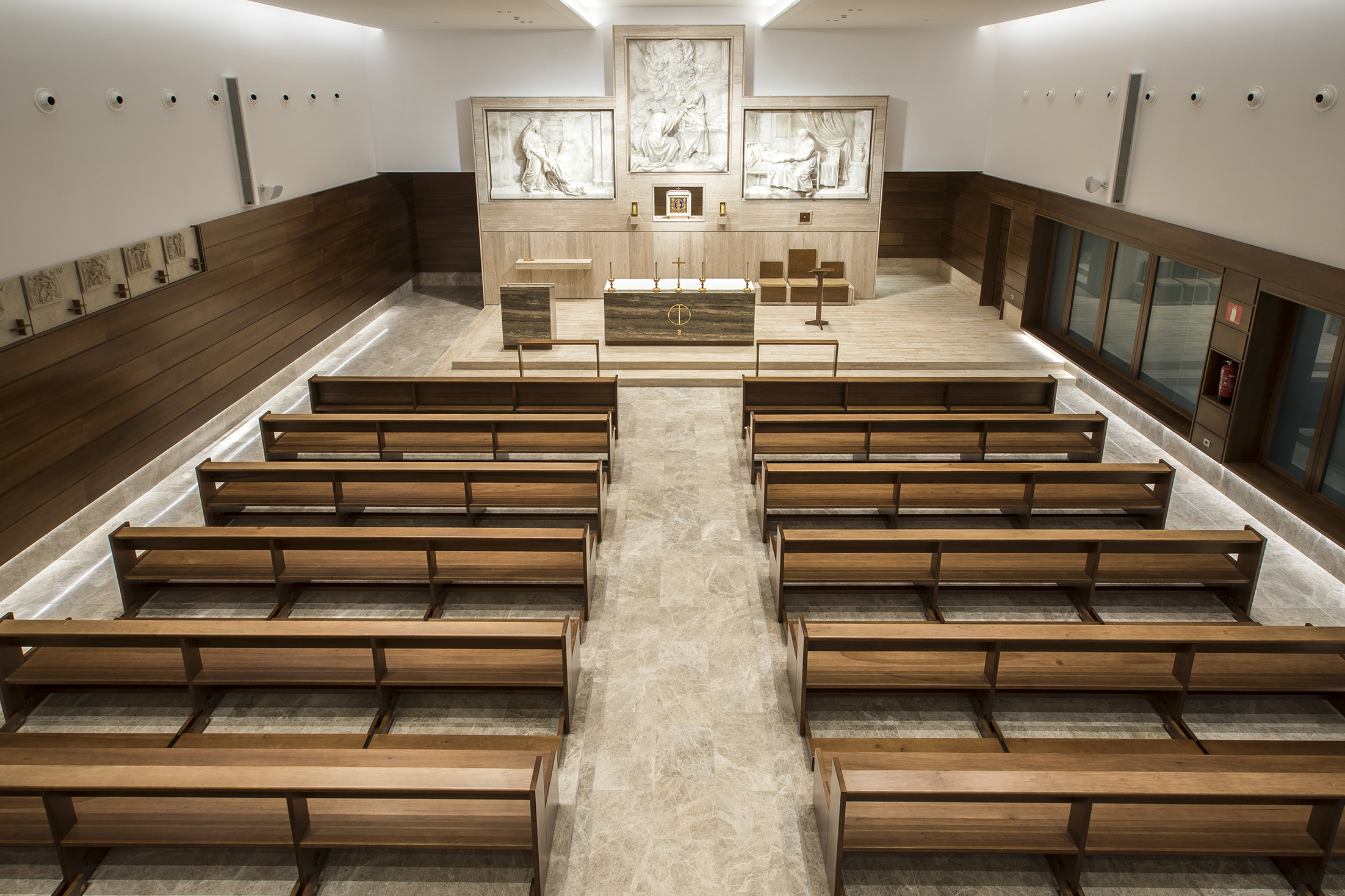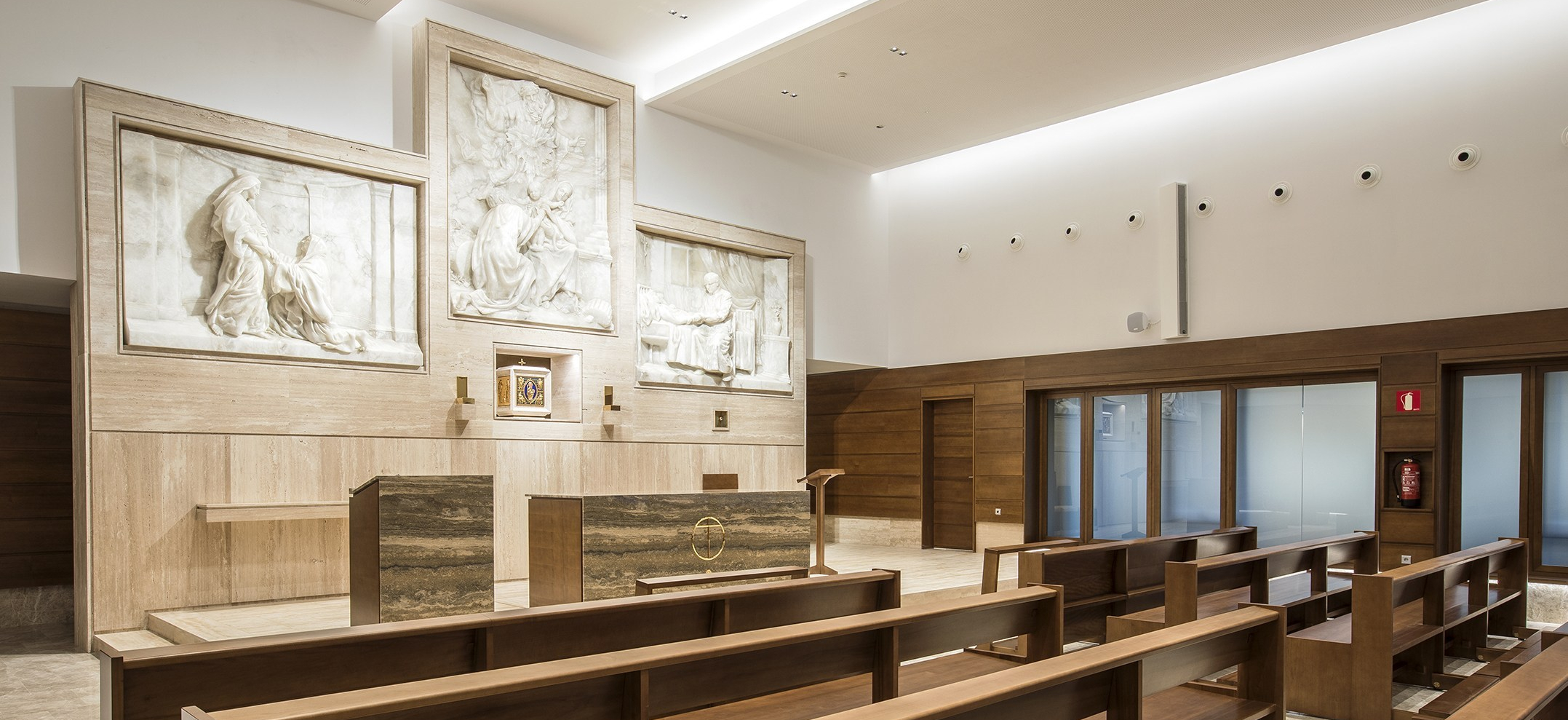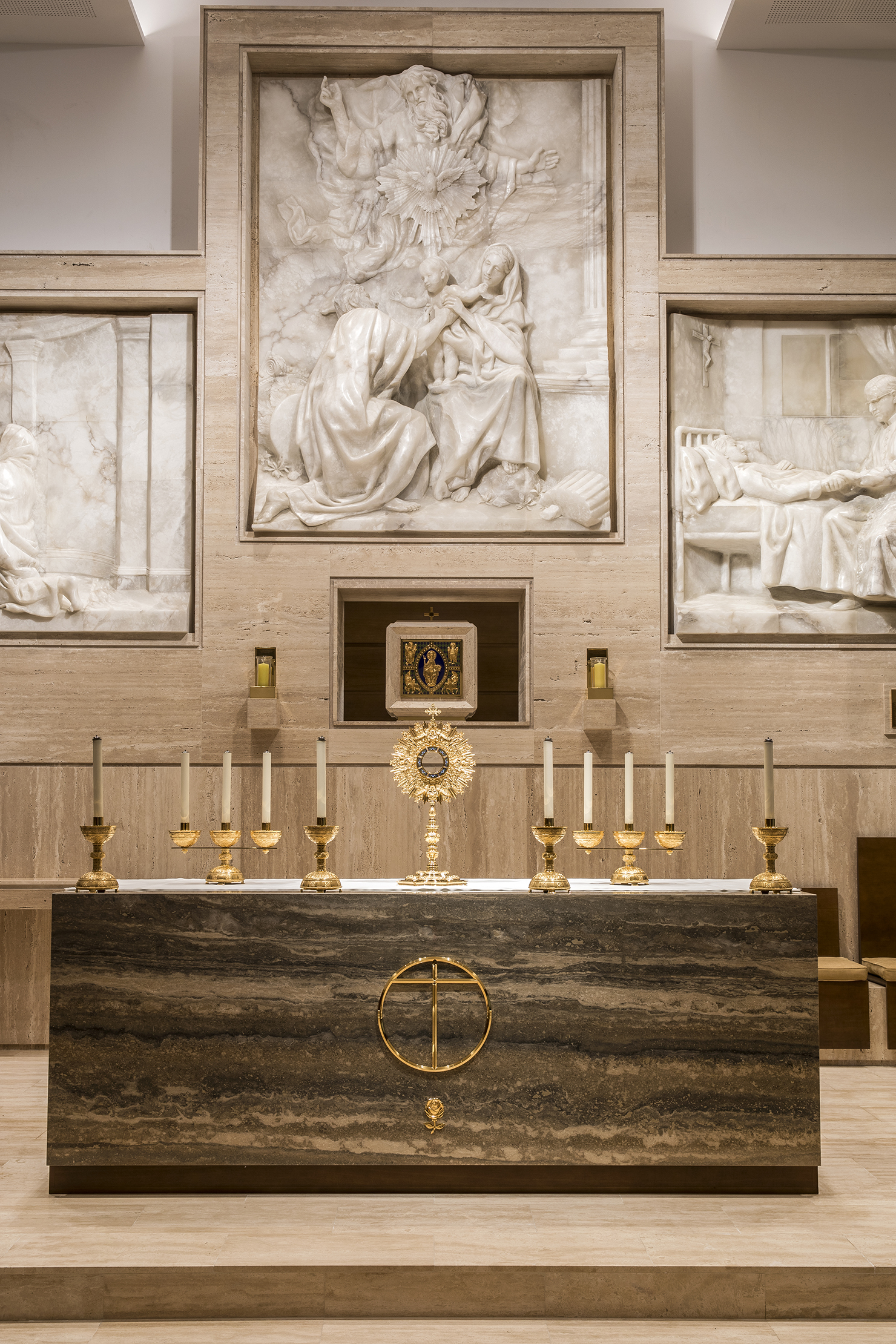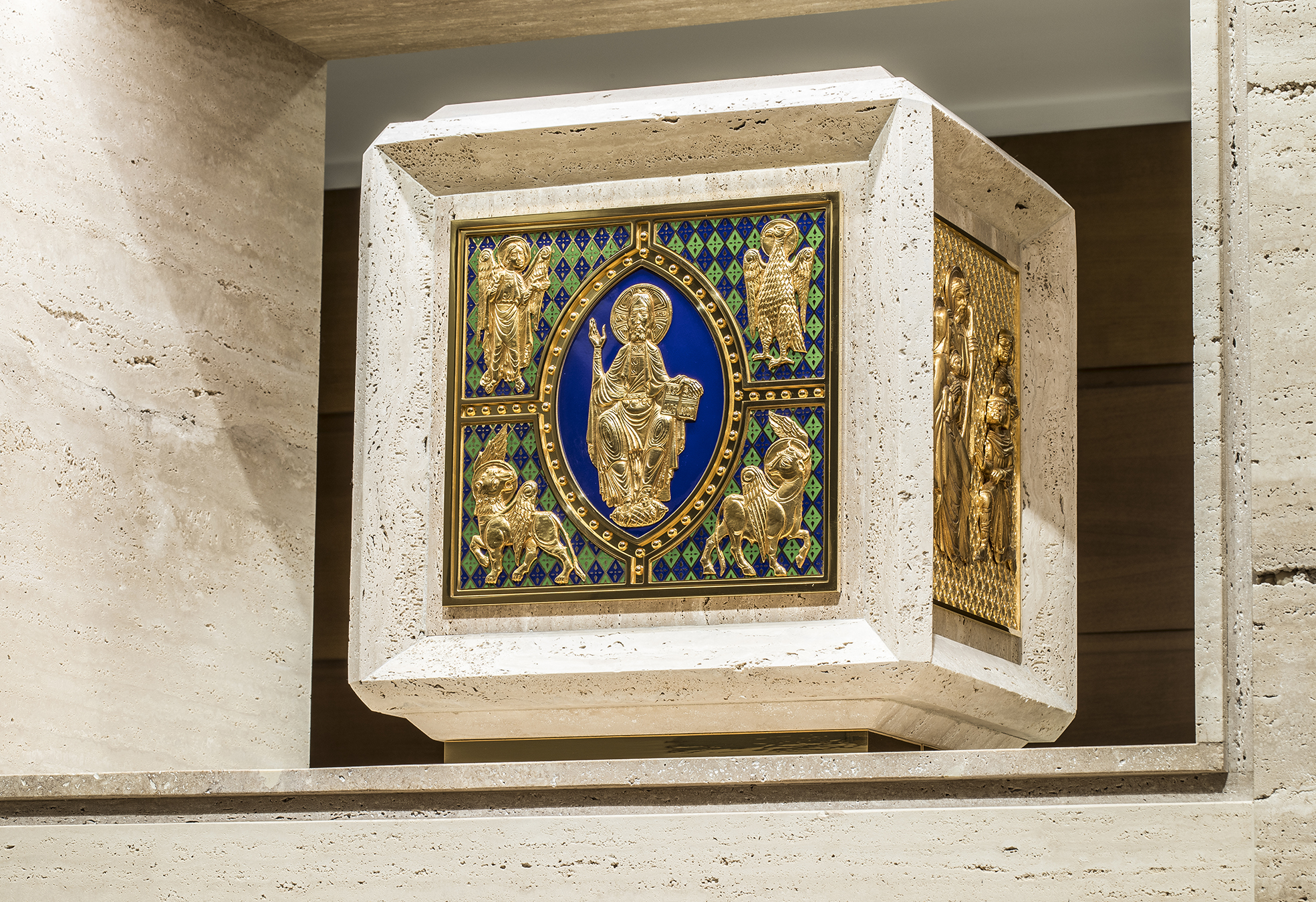The Clínica Universidad de Navarra in Madrid recently opened a new space dedicated to worship, designed from the outset taking the general architectural lines of the building as a reference. The greatest challenge of this project was to establish a dialogue and balance between tradition and modernity, between the classical and the contemporary. This is not limited to arranging the liturgical and devotional elements in isolation, but has to plan the space as a whole, so that everything in it breathes unity.

Front view of the chapel
From the beginning, it has not been guided by the desire to adapt a space that until then was like any other space into a sacred space, which requires not only a special care, but also a wide liturgical, theological, functional and artistic knowledge.
A chapel that breathes harmony through art, which speaks to our senses.

Side view of the chapel
We have tried to create, in the heart of this hospital center and in the midst of its daily hustle and bustle, a space for Liturgical Celebration and a place of encounter with God, which not only encompasses the aesthetic or the functional, but also fulfills the primary mission of "enhancing and extolling the Eucharistic celebration in its double moment": Holy Mass and the real permanent Presence of Christ in the Tabernacle.
In the first place, particular emphasis has been given to the symbolismThis is reflected in the design of the liturgical space and the iconographic program of the devotional images.
Secondly, in keeping with the company's long-established tradition of featuring outstanding artists, we have selected an prestigious cast of artists to carry out this great project.
Thirdly, special attention has been paid to the selection of materialsAmong them, wood, alabaster and travertine marble of different veins and colors.
The via sacra and the presbytery
The pavement of the presbytery is made of closed and polished travertine marble, that of the nave in pearl gray. Its purpose is to highlight the via sacra by creating a line that points directly to the altar. This and the ceiling, of a greater height in the central aisle, favor that the eyes are oriented to the altar, thus underlining that everything is organized and makes sense around it. Above the altar, in its center, like an "oculus", is the tabernacle.

Altar and central relief.
Two steps give access to the presbytery, made of Roman travertine marble, of the same type and tone as the masonry of the altarpiece. It is thus recalled that this, in its origin, was part of the altar itself, and that even today it does so from a transcendent point of view. In fact, the images that are placed on it are not simple ornaments, but have a liturgical meaning because of their symbolism.
Above the presbytery we find the altar and the ambo, clad in night travertine from the same block, with a very rich chromatic vein. On the other side of the altar, the third liturgical element of importance stands out: the see. Above it, there is a selicarium with relics of St. Josemaría.
The tabernacle and the altarpiece
The tabernacle is arranged as an oculus, like a window that crosses the altarpiece. It is accessed and illuminated from a small space behind the presbytery. It is made of the same marble as the altarpiece and incorporates enamels, in which Christ Pantocrator and the Tetramorphos are represented on the front, and on its door, behind the presbytery, the Mystic Lamb.

Marble tabernacle and enamels
Maintaining the dialogue between the ancient and the modern, the altarpiece is divided in the traditional form of three streets, of which the central one stands out in height. The frame is made of smooth travertine marble. The beauty of the stone accentuates the prominence of the triptych of alabaster reliefs.
For the reliefs, the alabaster carving technique has been recovered, an art with a long tradition in Spain. For this purpose, the blocks extracted from the quarries of Puebla de Hijar (Teruel) have been carefully selected and we have collaborated with the Scuola di Arte Sacra Onlus of Florence and specifically with the renowned American artist Cody Swanson, who, through his sketches, modeling and sculpting, has worked closely with us, giving life to the iconographic program devised by Granda.

Monstrance made for the chapel.
